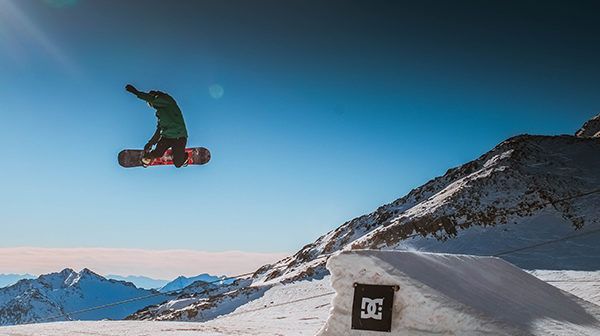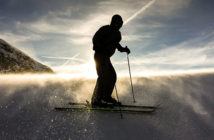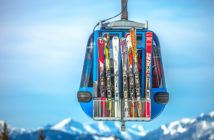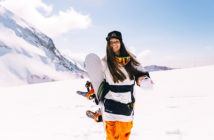Are you looking for the best freestyle snowboard of 2020? We’ve got you covered.
Also known as park snowboards, a freestyle snowboard is a valuable tool in any snowboarder’s back pocket.
They’re playful with a capital P — whether you’re taking it for a spin all over the mountain or, more popularly, in the terrain park.
We’ve got the complete lowdown on the best park snowboards of 2020, as well as a comprehensive buying guide so you can be sure that you’re making the best buying decision for you.
Here’s a sneak peek at our top 4 choices:
| Ability Level | Intermediate-Advanced | Intermediate-Advanced | Intermediate-Advanced | Beginner-Advanced |
| Profile | Rocker Hybrid | Flat - Rocker | Quad Camber | Continuous Rocker |
| Shape | Asymmetrical Twin | Twin | Twin | Twin |
| Best For... | Versatility | Jibbing | Pop | Newbies |
Let’s get straight into it…
Contents
What is a Freestyle Snowboard?
A freestyle snowboard is designed to be lively and playful. That means that they’re generally light and flexible, and usually a bit shorter than other categories of board.
Most people use their park snowboards in, you guessed it, the park, so they’re usually super expressive and ideally designed for jumps, jibbing and whatever other tricks you have up your sleeve.
Take a look at this freestyle snowboarder in action:
Newbies — make sure you don’t confuse freestyle with freeride. Although they might sound similar, they’re actually almost polar opposites. Freeride boards are designed for back-country riding, away from the groomed runs.
Freestyle boards can certainly be used all over the mountain if they’re versatile enough and are guaranteed to give you a fun and playful ride.
What Makes the Best Freestyle Snowboard?
Jibbing
Jibbing is the art of jumping and riding on top of other objects in the park. This is probably the number #1 practice that sees so much cross-over with skateboarding.
Sliding down a rail, for instance, would be considered jibbing — as would jumps on to and off a box.
As most people buy a freestyle snowboard entirely so they can really test their limits in the park, a board that can jib to a high level is probably your number one priority when it comes to buying a freestyle snowboard.
Jumps
Intimately connected with jibbing will be the board’s capacity to perform jumps — whether in the park or gliding down the mountain.
As we mentioned earlier, one of the defining features of the best freestyle snowboards is how light and flexible they are — ideally constructed for launching yourself into turns and jumps.
Liveliness and Pop
Behind the ability to jib and jump, you should also be looking for a board that exhibits real pop and that can give you a truly lively ride, wherever you are on the mountain.
A good amount of pop will allow to jib, jump and turn with the best of them, and the best boards won’t lose their pop with years of use either.
Newer snowboarders may feel unsettled by a board with plenty of pop, as it can certainly feel like a more unpredictable ride, so we recommend going for something a little more stable if you’re still growing in skills and confidence.
Medium-Soft Flex
Big, stiff boards that power down groomers aren’t going to be your friend in the terrain park. Hence why the best freestyle boards are almost the opposite of this with their shorter stature and wonderfully flexible tone.
Boards with soft and medium-soft flex are more likely to give you that pop you want to perform playful tricks and jibs. They perform well at lower speeds and are easily manoeuvrable.
When we say ‘flex’, we literally mean just that — how much give the board has from nose to tail.
Freestyle boards will feel much more flexible and springy than your usual alpine boards.
Be aware that if you want to use your freestyle board elsewhere on the mountain rather than just in the park, it’s better to go for a board with medium-soft flex rather than straight soft. Soft flex boards don’t normally perform as well at high speeds when you’re racing down the groomers, whereas medium-soft will give you more of an all-mountain feel.
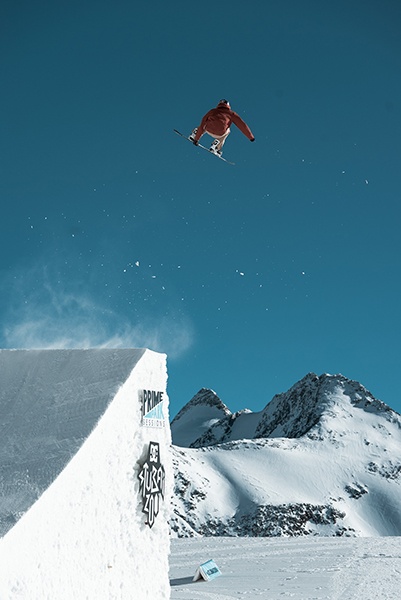
Stability
Stability certainly isn’t the most sought after feature of a freestyle board, usually because most people are looking to maximize playfulness above almost all else.
But we think some stability is definitely a good thing, and you’ll find that the best freestyle snowboards offer riders a degree of this thankfully. It’s especially useful if you plan to use your board outside of the park at higher speeds.
Bonus: Versatility
Tying into the last point, the best freestyle snowboards are versatile enough to be used all over the mountain, even if they specialize in park riding.
These snowboards tend to blur the lines between freestyle and all-mountain, and sometimes come with a heftier price tag — but, in our minds, it’s worth the extra cost for that greater freedom. We know that we’ll be able to use it whatever type of boarding we fancy.
Freestyle Snowboard Specs
Profile
Like most all-mountain snowboards, freestyle snowboards come in a huge variety of camber profiles, and which is best for you will come down almost entirely to personal preference.
Fully rockered, hybrid rocker and flat to rocker profiles are generally the most common profile shapes we see on freestyle boards. The rocker underfoot is particularly useful for powering down hard on rails, while any camber lends some extra stability when you’re landing after a jump.
A small proportion of freestyle boards are flat but these are really only popular amongst the jibbing-only crowd as this allows them to stay entirely connected to rails and boxes. This does make carving much more difficult, however, and generally cuts down on a board’s versatility. Flat to rocker, combining the best of both worlds, is much more popular.
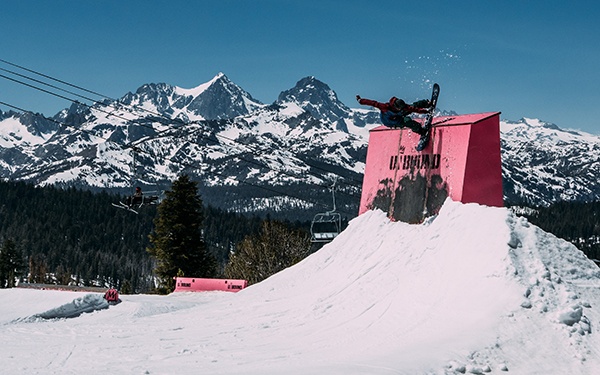
Shape
Twin
The majority of freestyle boards are true twin shape, which means that they are shaped the exact same way at the nose and tail.
This shape makes it easier for the rider to move both backwards and forwards, as well as perform tricks and land in the switch position. It’s trickier to do this if the board is directional at all as this would favor the nose over the tail.
Twin Asymmetrical
If your freestyle board isn’t a true twin, chances are it’s an asymmetrical twin.
This is where the board is symmetrical from left to right but has some subtle differences when it comes to mirroring the board front to back.
The idea between this slight asymmetry is to overcome the extra difficulty that is turning heel side versus toe side on true twin boards.
Twin Directional
Probably less common is the directional twin shape on a freestyle board.
These boards are slightly less well adapted to jibbing in the park than their true and asymmetrical twin counterparts, but will likely be more versatile and better suited to mountain riding.
Length
As we mentioned earlier, freestyle snowboards tend to be a couple of inches shorter than other board categories.
You’d be right in thinking that this necessarily cuts back a little on stability and speed in favor of playfulness — that’s the nature of a freestyle board, after all!
A shorter board equals higher maneuverability and a greater capacity to perform during tricks and jumps.
Shorter lengths are also well suited to beginner and intermediate snowboarders as they cut down on the board’s capacity to reach high speeds. That’s why many newbie boarders are keen to start out with a freestyle board.
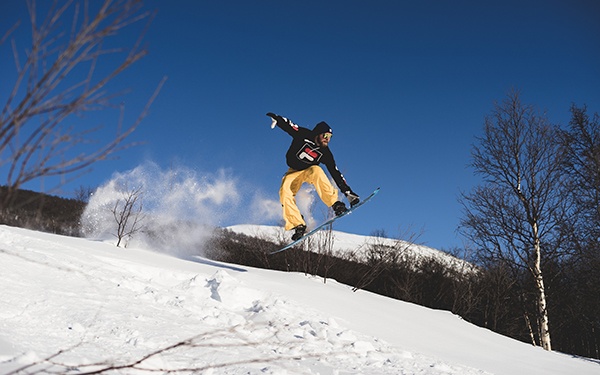
Width
Generally speaking, freestyle boards tend to be wider than all-mountain and freeride boards.
This cuts down a little on the board’s responsiveness, but does give the rider more to work with when it comes to jumping and landing. Plus, it lends extra balance during jibbing and makes for a more stable board.
There’s definitely a fine line though in terms of width, and those of you looking for a freestyle board with some versatility would be better looking at the narrower ones available.
If a board is too wide, it can feel sluggish and slow — even in the park.
Best Freestyle Snowboards of 2020
GNU Space Case
- Profile: Rocker/camber hybrid
- Shape: Asymmetrical Twin
- Flex: Medium
- Lengths: 147, 150, 153, 156, 159
- Ability Level: Intermediate – Advanced
The GNU Space Case was also one of our #1 picks for the best all mountain snowboard, an accolade we definitely still stand behind.
But it was originally designed to be a freestyle board, and it’s certainly a beast in the park — and with pretty much anything you can throw at it.
Fantastic on jumps and with an excellent switch, it’s also great on pipe. It’s not the best for jibbing in comparison to some of the other legends in this list, but it’s certainly not a slacker either.
As we mentioned, the versatility that the Space Case offers propels it into the all mountain category — it’s a good carver and remains stable at speed, something often missing from freestyle snowboards. We haven’t tried it in powder but we’ve heard it gives a mixed performance there.
The GNU Space Case is definitely a board to consider if you’re looking for a freestyle snowboard that can handle itself well all over the mountain — or even an all mountain board that specializes in freestyle.
Burton Paramount
- Profile: Camber
- Shape: Twin
- Flex: Medium-Soft
- Lengths: 152, 155, 158, 162
- Ability Level: Advanced
Just like the GNU Space Case above, it would be easy to argue that the Burton Paramount is also a good fit in the all-mountain category. It’s wonderfully versatile and definitely a good choice if you’re looking for an all-rounder that specializes in the park.
The Paramount is particularly popular for how damn poppy it is. This is a high energy board that demands a rider that’s really going to make the most of it.
The true twin shape lends it an impressive stability, and it’s truly a master at jumps and switches. The medium-soft flex also means that it’s easy to maneuver. Excellent at turns, as well.
Again it’s not our favorite for jibbing, but there’s no denying that it’s one of the best freestyle snowboards of the moment.
Capita Ultrafear
- Profile: Flat-Rocker
- Shape: Twin
- Flex: Medium-Soft
- Lengths: 147, 149, 151, 153, 153W, 155, 155W, 157
- Ability Level: Intermediate – Advanced
If you want a snowboard that’s truly freestyle instead of a specialist all mountain, then the Capita Ultrafear could be the one for you.
It really shines when it comes to jibbing — to the extent where we’d only really recommend it if you’re looking for a jibbing machine. It’s great at switching and not a bad jumper either — but jibbing is really its forte.
We’ve marked it down as suitable for intermediates and beyond, but a confident beginner could be at home with this board as well as it is a very forgiving ride and pretty stable too.
It’s not much to shout about outside of the park, although can certainly cope on a groomer or two if you fancied it between park sessions. Forget about using it in powder though.
Salomon Huck Knife
- Profile: Quad Camber
- Shape: Twin
- Flex: Medium
- Lengths: 148, 152, 155, 155W, 158, 158W
- Ability Level: Intermediate – Advanced
The Salomon Huck Knife is probably the freestyle board we see the most, at least in the US anyway.
And there’s a good reason why it’s so popular — it’s a fantastic freestyle board, very reasonably priced and wonderfully responsive.
Specially designed to perform well on jibs and jumps, this is very much a park board although it can hold its own on the slopes as well if you’re looking for a little versatility.
It feels very lightweight and fast underfoot, and is one of the most responsive and poppy freestyle boards we’ve tried in a while. Beginners are unlikely to get much from the Huck Knife as it requires some power behind it if you want to make it really sing.
 Rome Buckshot
Rome Buckshot
- Profile: Camber
- Shape: Twin
- Flex: Medium
- Lengths: 147, 151, 155, 156W, 158, 159W
- Ability Level: Intermediate – Advanced
Another board that’s most at home in the park, the Rome Buckshot has got some serious pop to contend with.
That responsiveness is mostly due to the aggressive camber profile combined with the rebound sidewalls. The Buckshot requires plenty of power and energy behind it to really perform at its peak.
It’s highly maneuverable, even for your average freestyle snowboard, but offers a surprising amount of stability. It’s very well suited to riding switch and jumps.
This is not an all mountain board, in our opinion, but is an excellent choice for any rider looking for a specialist park board.
Academy Propaganda
- Profile: Camber
- Shape: Twin
- Flex: Medium
- Lengths: 145, 149, 150, 152, 153, 155, 156, 158
- Ability Level: Intermediate – Advanced
A budget-friendly option that’s truly optimal for park riding, the Academy Propaganda is a jibbing dream.
Maneuverable but stable, it never feels sluggish — even when you’re pushing lower speeds during tricks. It’s got a good amount of pop without feeling too intimidating — a great choice for intermediate and even confident beginners boarders who want a forgiving ride while still challenging themselves.
Versatility isn’t a selling point of the Propaganda, but it never pretends to be anything other than a freestyle board.
Our one gripe is that the artwork reminds us a little of the 7-Eleven logo. Anyone else?
Lib Tech Skate Banana
- Profile: Continuous Rocker
- Shape: Twin
- Flex: Medium-Soft
- Lengths: 152, 153W, 154, 156, 156W, 159, 159W, 162W, 165W
- Ability Level: Beginner – Advanced
The Lib Tech Skate Banana is the only freestyle snowboard on this list that we wouldn’t hesitate to recommend to beginners. Don’t get us wrong, it’s still definitely well suited to more experienced riders, but there’s no doubt that this is a great board to start learning tricks with.
Whether you’re riding switch or jibbing, you’re sure to love the Skate Banana. It’s not quite as well suited to jumps — probably because it has a heavier feel than ideal — but still performs well with the right handling.
Stable, forgiving and easy to manuever, it’s got a good amount of pop that means it’s very at home in the park and freestyling across the mountain. It performs well at slow speeds as well.
There’s a degree of versatility to the Skate Banana although we wouldn’t go so far as to term it an all mountain snowboard. But feel free to take it for a spin down the groomers or even in powder if you fancy something different. Just be aware that it’s not made for carving nor bombing down at high speeds if that’s what you’re looking for.
Which do you think is the best freestyle snowboard?

